Recently I had an opportunity to be part of a three-day “Image Imaginarium” organized by Bonny Lhotka at Roland DGA. Under the leadership of Jay Roberts, Roland’s Product Manager for UV Printers, six artists explored how Roland printers might be used to make art. One of my projects was an artist book, Ladies of the Night.
Ladies of the Night used photographs taken in 2003 of twin performance artists, Abigail and Emily Taylor. For that series of work, “Body + Soul, I digitally manipulated the photographs and transferred the prints to old wood boxes. The book used further manipulated photographs of the prints and incorporated related text.


I designed the book to fit into a 10 by 12 by ½-inch aluminum box. Printed 57 inches long, it folded as an accordion with six 9½ by 11½-inch pages inside and six pages outside.
My project had several distinct challenges. The ink needed to be as rich on the reverse as on the front and not soak into the uncoated back side. The paper should be able to be scored and folded into pages without the ink cracking on the edges. And, last, but not least, the back and front of the 57-inch long print needed to be perfectly aligned on both sides of the paper.
Fortunately, Jay Roberts recognized these potential problems and resolved them with the VersaUV LEC-330 and their wonderful Eco-UV S ink. Designed to shrink or stretch when wrapping objects like vehicles, the S ink was dense and flexible producing deep, rich blacks on both coated and uncoated surfaces with no cracking on the folds.
The alignment was achieved with a combination of printer quality and operator expertise so that there was pin registration and no skew on these cut and turned sheets.
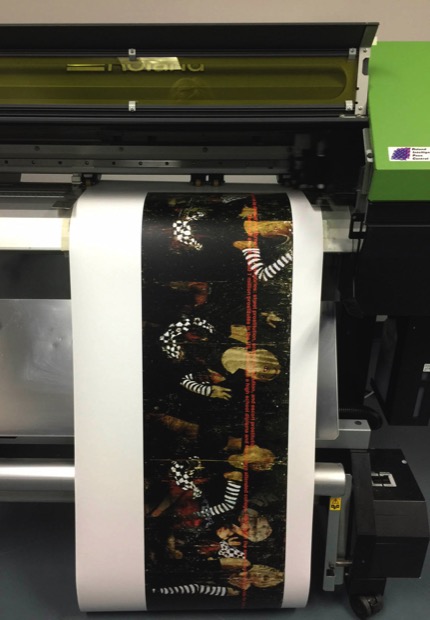
To prepare the covers for the boxes, the white on the costume was selected in Photoshop, saved as a spot channel, and designated to print in 100% white on the aluminum. The letters of the title were similarly selected and designated to print only as a gloss layer with the red omitted—a choice that highlighted the capability of the printer while referencing the book’s content.
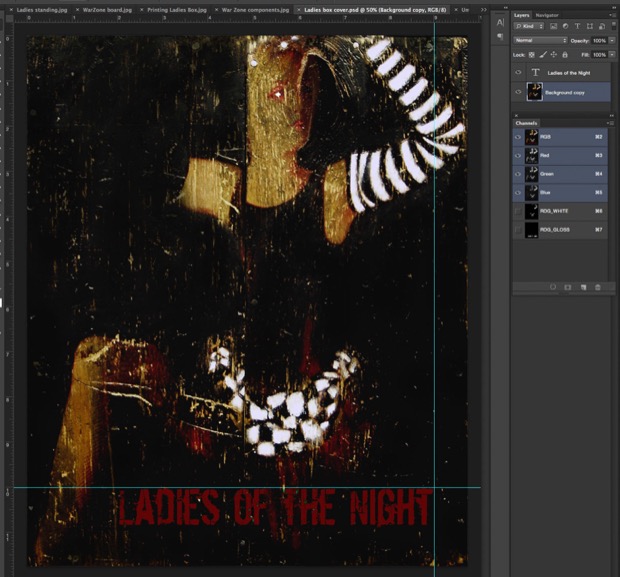
The boxes were taped around the edges to keep them clean from overspray. For placing the boxes, an outline template was printed onto the flatbed surface of the LEF-300, a 13 by 30-inch flatbed that prints on plastics, wood, and metal up to 3.96 inches thick with CMYK, white, and gloss inks. The white details were printed first, then the CMYK image. Finally, the color was omitted from the title and only the gloss ink used in a double strike. The ink created a reflective, embossed surface that shifted with the light and seemed an appropriate reference to the content.
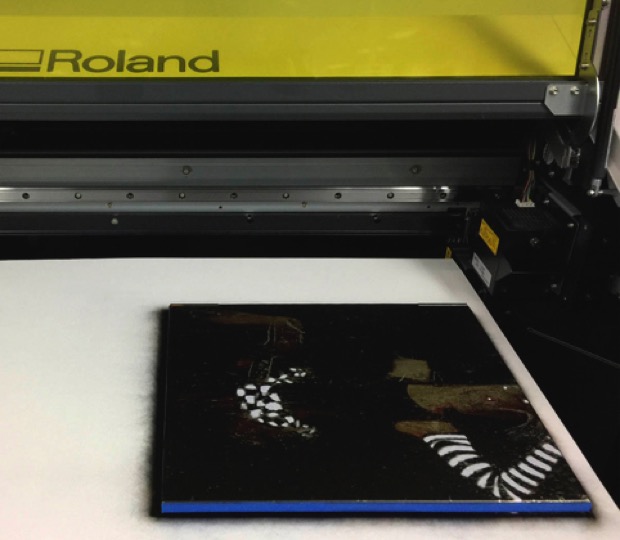
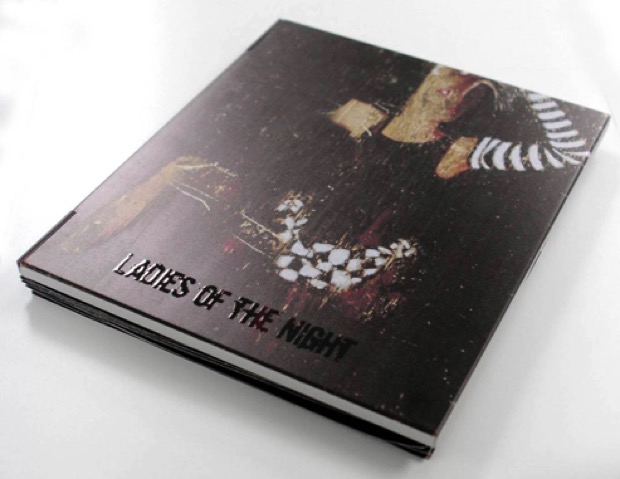
A scoring machine was used to make indentations for folding the pages. The paper and ink were so heavy it would have been difficult to score the pages by hand.
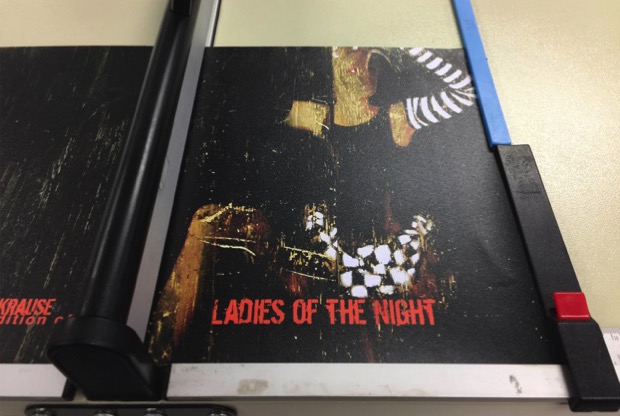
Ladies of the Night, is a concertina book 9½ by 57 inches, folded to 12 pages, 9½ by 11½ inches. It is housed in a 10 by 12 by ½-inch aluminum box. It was printed in an edition of 10.
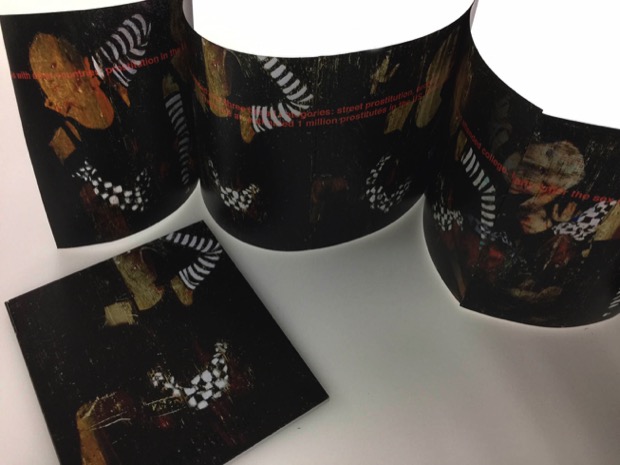
As an add-on to the book project, I also had an opportunity to work with Lily Hunter, Roland’s Product Manager of Textiles and Consumables and an expert in dye-sublimation printing. Dye sublimation is a process by which an image is printed onto a transfer material and the ink is turned into a gas, or “sublimed” with heat into a receiver surface. Six of the individual images were transferred to 11 by 14-inch aluminum surfaces that had been painted white. The white details of the costumes are crisp and vibrant while the underlying metal provides a glowing reflectivity.
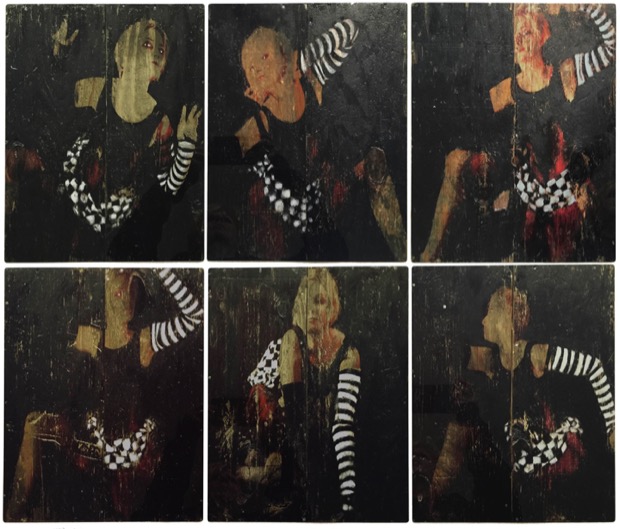
In addition to Ladies of the Night, during the three days of exploration at Roland with Jay Roberts I produced a second book, WarZone. The opportunity to work around a group of motivated artists was informative and challenging. Roland’s staff of dedicated experts made this a unique experience for all the participants. Many thanks to Bonny, Jay, and Roland for making this possible.















Discussion
Only verified members can comment.